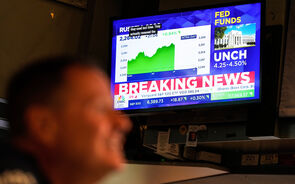Bull Market Survival Rate Increases After One Year
1 Mensagem
|Página 1 de 1
Bull Market Survival Rate Increases After One Year
The bull market turns one on Tuesday having surged almost 70 percent from its 12-year closing low on March 9, 2009. History shows that by simply passing that 12-month threshold, it will make it that much more rare for the advance to suddenly end.
The 13 bull markets since 1930 that have lasted more than a year have averaged, a total gain of 153% and a total length of 4.4 years, according to data from Bespoke Investment Group.
"Bull markets that pass the one year mark have almost always lasted two years or more," wrote Bespoke's analysts, in a note to clients on Friday. "The one bull that lasted more than a year and ended after 393 days was in 1948, and that bull only saw a gain of 24 percent, so it's nothing like the current one."
The research firm defines a 'bull market' as an advance greater than 20 percent that follows a fall in excess of 20 percent.
To be sure, as some of the greatest investors like Legg Mason's Bill Miller to your average investor with a retirement account learned all too well in the last decade, historical performance doesn't always match future returns. But right now, many smart strategists believe that this bull has earned a lifespan of at least two years based on powerful emergency spending by the Federal Reserve, the tremendous earnings growth by companies because of productivity increases and the resiliency of demand for goods and materials from emerging markets.
"We continue to believe the economy and financial markets remain in longer-term recovery mode," wrote Brian Belski, Oppenheimer's Chief Investment Strategist, today. "Therefore, we continue to recommend that investors gain exposure to U.S. stocks at current levels." Belski recommends for clients to overweight the technology, industrial and health care sectors.
We likely won't get that next 70 percent this year however. Two other widely followed strategists, Goldman's David Kostin and Raymond James' Jeffrey Saut see about a 10 percent gain from here to 1250 on the S&P 500. Both cited powerful 2010 earnings growth that Goldman Sachs believes will hit 33 percent on average for companies in the S&P 500. Historically over time, the stock market has tracked gains in earnings plus dividends.
But why is one year the magical milestone? Perhaps it is because it takes more than a year for a bull market to prove its mettle with the often stubborn and less nimble retail investor, which has sat out most of these gains in bonds. Once they are convinced, their money comes flowing in and provides at least another 12-month lift to stocks.
Fonte: CNBC
Será? O que valem as estatísticas num caso assim?
- Mensagens: 238
- Registado: 1/11/2008 0:38
- Localização: Lisboa
1 Mensagem
|Página 1 de 1


